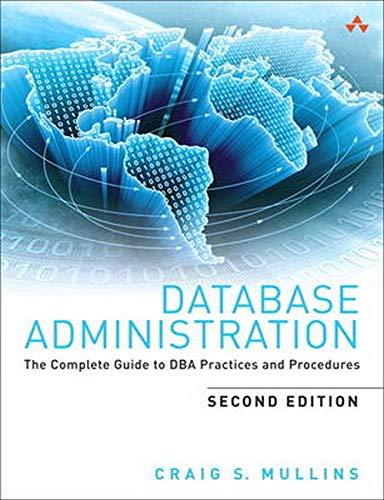Question
QUESTION 1 In programming languages, the use of keywords is more restrictive than reserved words .(T/F)? QUESTION 2 Like the if/else statement in Java and
QUESTION 1
In programming languages, the use of keywords is more restrictive than reserved words.(T/F)?
QUESTION 2
Like the if/else statement in Java and C++, the Racket else statement is optional. (T/F)?
QUESTION 3
Variables can be characterized as a sextuple (6-tuple) of which six attributes?
QUESTION 4
At which possible binding time is a C or C++ static variable bound to a memory location?
|
| a. | Load time |
|
| b. | Compile time |
|
| c. | Runtime |
|
| d. | Language design time |
|
| e. | Language implementation time |
QUESTION 5
At which possible binding time is the Java + operator symbol bound to a memory location?
|
| a. | Compile time |
|
| b. | Load time |
|
| c. | Runtime |
|
| d. | Language implementation time |
|
| e. | Language design time |
QUESTION 6
Select all that are examples of dynamic type binding.
|
| a. | Perl $x = 4; |
|
| b. | Python x = int(4.0) |
|
| c. | Java int x = (int)4.0; |
|
| d. | C++ int x = 4; |
QUESTION 8
Match these Storage Binding and Lifetime categories of scalar variables with their definitions.
|
|
QUESTION 7
Match the terms with their definitions.
|
|
QUESTION 9
Python data types are declared explicitly.
True
False
QUESTION 10
Matching the term to the definition.
|
|
QUESTION 11
What are the design issues for names?
QUESTION 12
What is the potential danger of case- sensitive names?
QUESTION 13
What is an alias?
QUESTION 14
Define static binding and dynamic binding.
QUESTION 16
What is a block?
QUESTION 17
What is the purpose of the let constructs in functional languages?
QUESTION 18
What is a static ancestor of a subprogram? What is a dynamic ancestor of a subprogram?
QUESTION 19
What are the advantages of named constants?
QUESTION 20
What are the advantages and disadvantages of dynamic scoping?
Step by Step Solution
There are 3 Steps involved in it
Step: 1

Get Instant Access to Expert-Tailored Solutions
See step-by-step solutions with expert insights and AI powered tools for academic success
Step: 2

Step: 3

Ace Your Homework with AI
Get the answers you need in no time with our AI-driven, step-by-step assistance
Get Started


